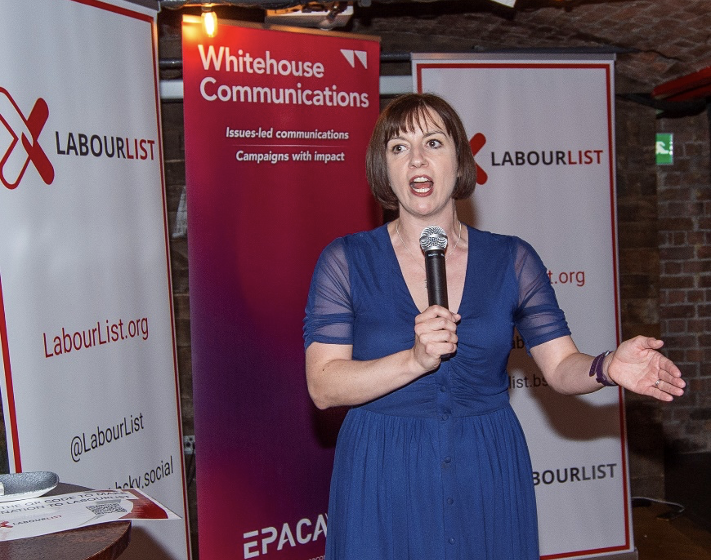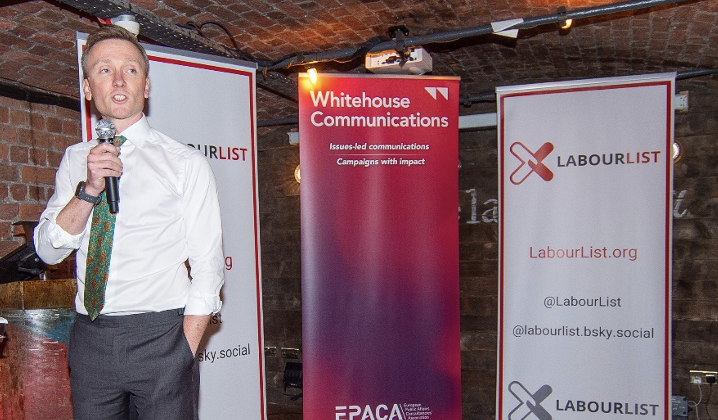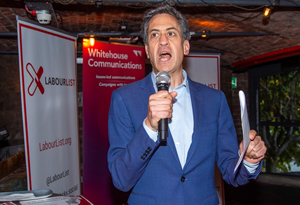So, as the Westminster bubble poured out of Liverpool’s Albert Docks and back to London, and the political gaze shifts to the Conservative Party Conference in Manchester this coming weekend, we look back at three things we learned at Labour conference. Obviously, the main thing we learned is that it can be sunny for the full four days!
You can pretend it’s fine if you want to
There was no shortage of things for Keir Starmer to worry about ahead of this year’s conference: Reform on the rise, the King of the North looking for a new southern kingdom, and about 50 Palestine Action protestors sitting right outside the secure zone.
There was definitely a feeling of heightened security this year, with long queues both to collect passes and to get into the secure zone on the Monday morning; perhaps Keir was hoping they’d stop Andy Burnham getting in ahead of this three – yes three – fringe event appearances.
Other protestors included ones against Digital ID, announced in the Home Secretary’s speech, a smattering of smaller causes and, of course, Westminster’s favourite remainer Steve Bray.
 Despite the obvious reasons to feel down, the mood seemed cheery, almost giddy at times. Could it be that expectations were so low, all it took was Steve Reed signing a few YIMBY baseball caps outside the Pullman to cheering supporters for it to feel celebratory again?
Despite the obvious reasons to feel down, the mood seemed cheery, almost giddy at times. Could it be that expectations were so low, all it took was Steve Reed signing a few YIMBY baseball caps outside the Pullman to cheering supporters for it to feel celebratory again?
In some ways, Burnham did Keir a favour, seemingly coming out a little too all-guns-blazing in his leadership bid and ultimately uniting the party around the Prime Minister. Speeches from a long line of Ministers at LabourList’s rally on the Sunday night focussed instead on the threat of Nigel Farage and Keir’s successes, to the extent that even the Deputy Leadership contest seemed overshadowed.
 However, the repeated attacks on Farage, the listing of policies from the likes of Ed Miliband to prove change is happening, the rather bizarre attack on Ed Davey from Torsten Bell, all suggested a government slightly more on the defensive than the Conference mood would suggest.
However, the repeated attacks on Farage, the listing of policies from the likes of Ed Miliband to prove change is happening, the rather bizarre attack on Ed Davey from Torsten Bell, all suggested a government slightly more on the defensive than the Conference mood would suggest.
The ad-hoc conversations continue to be what matter at Conference for campaigners
With a fringe schedule bursting at the seams, there was no shortage of events to attend, and that’s leaving aside the exhibition hall where stands are becoming increasingly creative. This year saw the hall fitting in a full-size bus, a life-size giraffe, a racing game simulator, and very fetching bright blue Liverpool City Region tote bags which were all the rage. One MP quipped to me that Conference was more corporate than ever, and the increased prices certainly didn’t seem to have put off many businesses from sponsoring panels or branding their own pavilion.
The dry weather meant that many people clustered outside rather than in the confines of auditoriums or even the bars, putting the emphasis back on quick catch-ups and prearranged meetings. MPs proved willing to give their time and thoughts, be it while walking beside the Mersey or in the Lloyds Lounge.
The set piece events, while many and diverse, seemed to lack opportunity for real discussion. The Creative UK media showcase was a standout for Joseph Roberts’ poetry and performances from the Philharmonic Youth Company, but Lisa Nandy’s speech seemed similar to the one she gave at the YouTube function on the same day. Stump speeches are fine, but campaigners want to engage on specific issues.
Unsurprisingly, there were stampedes towards events with free bars and Burnham’s early appearances on the Sunday. More loosely choreographed receptions such as these offered more time for networking while still having the pull of a star speaker or attractive freebies. Who doesn’t want to schmooze while listening to MPs belt out Oasis and Neil Diamond at LabourList’s karaoke?
The reshuffle is still…shuffling
Conference is a time that lesser-known Ministers can make their mark, and more well-known ones can shine or even steal the show. For many Ministers this year, however, they’ve only been in the job three weeks and Starmer’s cabinet as a whole still seem to be finding their footing.
 MPs suggested to me that it all had the air of square pegs in round holes, with people reshuffled simply to make room in certain departments and competent Ministers moved to new briefs for politically convenient reasons. Shabana Mahmood’s speech was met with polite smatterings of applause while Pat McFadden’s seemed light on policy. The repeated mention of flags, patriotism, even immigration, all seemed aimed at those voters who might be considering Reform.
MPs suggested to me that it all had the air of square pegs in round holes, with people reshuffled simply to make room in certain departments and competent Ministers moved to new briefs for politically convenient reasons. Shabana Mahmood’s speech was met with polite smatterings of applause while Pat McFadden’s seemed light on policy. The repeated mention of flags, patriotism, even immigration, all seemed aimed at those voters who might be considering Reform.
Because of this, what isn’t much clearer is the political identity of Starmer’s cabinet; it was striking that Angela Rayner got such hearty applause during Steve Reed’s speech as he hailed her as a “true working class hero”. Reed’s announcement of 12 New Towns and his appearance outside with screaming young activists proffering their YIMBY baseball caps for him to sign suggested the kind of exciting narrative Labour could own.
And with Starmer determined to reclaim patriotism, shift Reform further to right, and recapture left-wing voters who fear a Farge government, you can see a political strategy emerging. What will be key is to continue this new strategy after conference finishes and not let the leader’s speech be a one-off.
If you like to hear more about how to engage at Party Conferences or to discuss your public affairs and communications needs, please contact us at Whitehouse Communications via Sophie.brownlee@whitehousecomms.com












